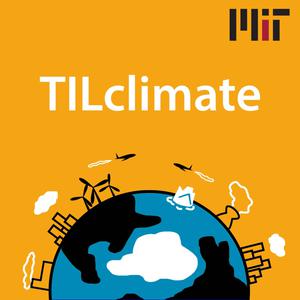
TILclimate
MIT Environmental Solutions Initiative
Get smart quickly on climate change. This award-winning MIT podcast, Today I Learned: Climate, breaks down the science, technologies, and policies behind climate change, how it’s impacting us, and what our society can do about it. Each quick episode gives you the what, why, and how on climate change — from real scientists — to help us all make informed decisions for our future.
- 14 minutes 51 secondsAn introduction to hydrogen energy (re-air)
Hydrogen gas acts like a fossil fuel, but with no carbon emissions. Is it the silver bullet we’ve been waiting for? To prepare for some new listener questions about hydrogen energy, we're re-airing this season four episode in which Prof. Svetlana Ikonnikova of the Technical University of Munich explains how hydrogen works and its potential in the energy transition.
For a deeper dive and additional resources related to this episode, visit: https://climate.mit.edu/podcasts/e4-introduction-hydrogen-energy-re-air
For more episodes of TILclimate by the MIT Environmental Solutions Initiative, visit tilclimate.mit.edu.
Credits
Laur Hesse Fisher, Host and Executive Producer
David Lishansky, Editor and Producer
Aaron Krol, Writer and Producer
Andrew Moseman, Science Reporter
Michelle Harris, Fact Checker
Music by Blue Dot Sessions
Artwork by Aaron Krol
25 April 2024, 9:00 am - 7 minutes 24 secondsDo wind turbines kill birds?
Wind power is the largest source of clean, renewable energy in the United States. But the large turbines that create that power can endanger wildlife. MIT Professor Michael Howland returns to the podcast to answer a listener's question about the risks of wind energy to birds—and explain how wind turbines compare to coal plants, power lines, office towers, housecats, and other threats to birdlife in the modern world.
For a deeper dive and additional resources related to this episode, visit:
For more episodes of TILclimate by the MIT Environmental Solutions Initiative, visit tilclimate.mit.edu.
Credits
Laur Hesse Fisher, Host and Executive Producer
David Lishansky, Editor and Producer
Aaron Krol, Writer and Producer
Michelle Harris, Fact Checker
Music by Blue Dot Sessions
Artwork by Aaron Krol
11 April 2024, 9:00 am - 7 minutes 46 secondsDo wind turbines freeze up in the cold?
You might have heard how wind turbines failed in Texas during a terrible cold front in 2021. Does this mean we can’t rely on this clean, renewable source of energy when the weather turns extreme? MIT Professor Michael Howland joins the podcast to explain how wind turbine operators prepare for frigid conditions, and why some turbines failed in Texas while others are working fine in Antarctica.
For a deeper dive and additional resources related to this episode, visit:
For more episodes of TILclimate by the MIT Environmental Solutions Initiative, visit tilclimate.mit.edu.
Credits
Laur Hesse Fisher, Host and Executive Producer
David Lishansky, Editor and Producer
Aaron Krol, Writer and Producer
Michelle Harris, Fact Checker
Music by Blue Dot Sessions
Artwork by Aaron Krol
4 April 2024, 9:00 am - 8 minutes 50 secondsWon’t more CO2 help plants grow?
Plants take in CO2 from the air to grow—and today’s atmosphere has about 50% more CO2 than it did before we started burning massive amounts of fossil fuels. So, is that great news for plants? Prof. David Des Marais, a plant ecologist at MIT, helps answer this listener question.
For a deeper dive and additional resources related to this episode, visit:
For more episodes of TILclimate by the MIT Environmental Solutions Initiative, visit tilclimate.mit.edu.
Credits
Laur Hesse Fisher, Host and Executive Producer
David Lishansky, Editor and Producer
Aaron Krol, Writer and Producer
Andrew Moseman, Science Reporter
Michelle Harris, Fact Checker
Music by Blue Dot Sessions
Artwork by Aaron Krol
28 March 2024, 9:00 am - 1 minute 49 secondsSeason 6 Preview: Something a Little Different
The sixth season of Today I Learned: Climate is coming in two weeks, and this time we’re doing something a little different. People all around the world write into our team with questions about climate change. So this season, we’re working with scientists and experts at MIT and beyond, to answer those questions in language we can all understand.
15 March 2024, 9:00 am - 15 minutes 49 secondsWhy does it take five years to build a wind farm?
The United States has a goal to power the country with 100% clean electricity by 2035. Unfortunately, our energy regulations are not set up to make this much change this quickly. Energy economist John Parsons of MIT joins the show to explain how much clean energy infrastructure we need to build, the obstacles to building it, and reform ideas to transform our energy system on the timeline our climate goals demand.
For a deeper dive and additional resources related to this episode, visit: https://climate.mit.edu/podcasts/e8-why-does-it-take-five-years-build-wind-farm
For more episodes of TILclimate by the MIT Environmental Solutions Initiative, visit tilclimate.mit.edu.
Credits
Laur Hesse Fisher, Host and Producer
David Lishansky, Editor and Producer
Aaron Krol, Scriptwriter and Associate Producer
Ilana Hirschfeld, Production Assistant
Sylvia Scharf, Education Specialist
Michelle Harris, Fact Checker
Music by Blue Dot Sessions
Artwork by Aaron Krol
7 December 2023, 10:00 am - 14 minutes 43 secondsEnergy storage: keeping the lights on with a clean electric grid
The large majority of new energy we’re building today comes from clean, renewable wind and solar projects. But to keep building wind and solar at this pace, we need energy storage: technologies that save energy when the weather is favorable, and use it when wind and sun are scarce. Prof. Asegun Henry joins TILclimate to explain how energy storage works, what storage technologies are out there, and how much we need to build to make wind and solar dominant.
For a deeper dive and additional resources related to this episode, visit: https://climate.mit.edu/podcasts/e7-energy-storage-keeping-lights-clean-electric-grid
For more episodes of TILclimate by the MIT Environmental Solutions Initiative, visit tilclimate.mit.edu.
Credits
Laur Hesse Fisher, Host and Producer
David Lishansky, Editor and Producer
Aaron Krol, Scriptwriter and Associate Producer
Ilana Hirschfeld, Production Assistant
Sylvia Scharf, Education Specialist
Michelle Harris, Fact Checker
Music by Blue Dot Sessions
Artwork by Aaron Krol
30 November 2023, 10:00 am - 12 minutes 12 secondsA public health expert’s guide to climate change
We all want to live full, healthy lives. But climate change is threatening a growing number of people’s lives and well-being. Amruta Nori-Sarma, assistant professor of environmental health at Boston University School of Public Health, joins the show to help us see climate change not in tons of carbon dioxide, but as a matter of health.
For a deeper dive and additional resources related to this episode, visit: https://climate.mit.edu/podcasts/e6-public-health-experts-guide-climate-change
For more episodes of TILclimate by the MIT Environmental Solutions Initiative, visit tilclimate.mit.edu.
Credits
Laur Hesse Fisher, Host and Producer
David Lishansky, Editor and Producer
Aaron Krol, Scriptwriter and Associate Producer
Ilana Hirschfeld, Production Assistant
Sylvia Scharf, Education Specialist
Michelle Harris, Fact Checker
Music by Blue Dot Sessions
Artwork by Aaron Krol
16 November 2023, 10:00 am - 21 minutes 28 secondsTILclimate presents: What the heck is El Niño, anyway? (from Outside/In)
We were going to produce an episode on El Niño, and its relationship to climate change. And then we found out that Outside/In, from New Hampshire Public Radio, already did that. And they did a really good job. So please enjoy this episode of Outside/In, where you'll learn what El Niño is, how to tell if extreme weather events are caused by climate change or by El Niño, and what the powerful El Niño event of 2023 can tell us about our climate future.
Outside/In is a production of NHPR, New Hampshire Public Radio, a podcast where curiosity and the natural world collide. In addition to their regular program, they have run special limited series covering issues from the offshore wind industry to lawns and gardens to Canadian hydropower.
Learn more at outsideinradio.org.9 November 2023, 10:00 am - 13 minutes 38 secondsWildfires and how we're changing them
If you live in the U.S. Mountain West, the Pacific Coast of the Americas, or large parts of Australia or southern Europe, there’s a good chance a major wildfire has passed near you in the last five or six years—maybe one more intense than anything you’ve ever heard of in your area. But why exactly are wildfires getting worse? Is climate change entirely to blame? And what should we be preparing for next? Dr. Daniel Swain joins the TILclimate podcast to help break down what is going on with wildfires and climate change.
For a deeper dive and additional resources related to this episode, visit: https://climate.mit.edu/podcasts/e5-wildfires-and-how-were-changing-them
For more episodes of TILclimate by the MIT Environmental Solutions Initiative, visit tilclimate.mit.edu.
Credits
Laur Hesse Fisher, Host and Producer
David Lishansky, Editor and Producer
Aaron Krol, Scriptwriter and Associate Producer
Ilana Hirschfeld, Production Assistant
Sylvia Scharf, Education Specialist
Michelle Harris, Fact Checker
Music by Blue Dot Sessions
Artwork by Aaron Krol
2 November 2023, 9:00 am - 14 minutes 24 secondsCan desalination solve water scarcity?
Today we’re talking about desalination: turning saltwater into freshwater, so we can drink it or use it to grow crops. And we’re talking about this because, in many parts of the world, freshwater is getting harder to come by. So… is converting saltwater a good solution? Our guest Prof. John Leinhard has devoted his whole career to this question—and its relationship with climate change.
For a deeper dive and additional resources related to this episode, visit: https://climate.mit.edu/podcasts/e4-can-desalination-solve-water-scarcity
For more episodes of TILclimate by the MIT Environmental Solutions Initiative, visit tilclimate.mit.edu.
Credits
Laur Hesse Fisher, Host and Producer
David Lishansky, Editor and Producer
Aaron Krol, Scriptwriter and Associate Producer
Ilana Hirschfeld, Production Assistant
Sylvia Scharf, Education Specialist
Michelle Harris, Fact Checker
Music by Blue Dot Sessions
Artwork by Aaron Krol
26 October 2023, 9:00 am - More Episodes? Get the App
Your feedback is valuable to us. Should you encounter any bugs, glitches, lack of functionality or other problems, please email us on [email protected] or join Moon.FM Telegram Group where you can talk directly to the dev team who are happy to answer any queries.
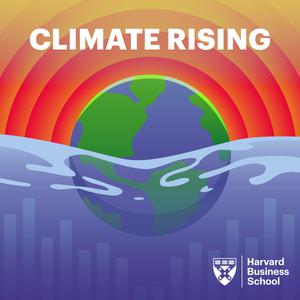 Climate Rising
Climate Rising
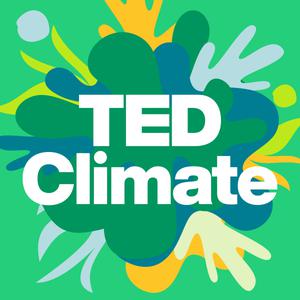 TED Climate
TED Climate
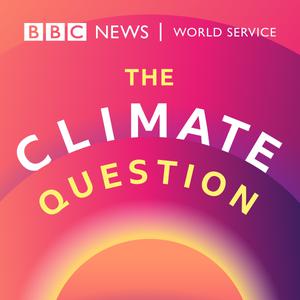 The Climate Question
The Climate Question
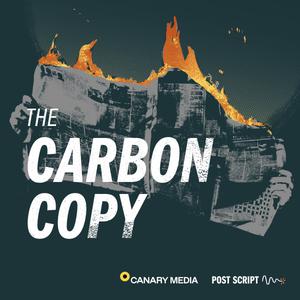 The Carbon Copy
The Carbon Copy
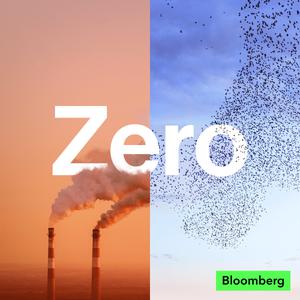 Zero: The Climate Race
Zero: The Climate Race
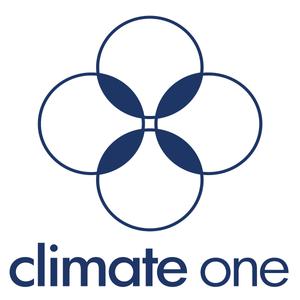 Climate One
Climate One